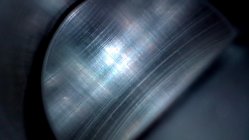timeout
Silver $$ Contributor
As many of you may have noticed, I was so bored with winter that I watched the first half of the Super Bore yesterday. This morning out of that same boredom I removed the neck sizing bushing and depriming rod from a FL resizing die, followed by an internal cleaning. After cleaning the inside of the die I took a look inside by shining a light in there. I was less than impressed with what I saw. In my early years I spent much time as a mechanic and engine builder. I'm used to seeing a nicely honed finish on cylinder walls. What I saw inside this die was a finish combined of deep grooves and higher areas where a reamer or hone touched in the completion of the manufacturing process. It appears to me that the initial part of the process was done by using a drill that is supposed to be very close to the finished ID. That's undoubtedly the fastest and most cost effective way to do it. The problem in this case must be that the drill used is of a larger OD than it should be and did not leave enough meat inside for the final finishing operation to produce a smooth finish. This was neither a custom die nor the cheapest brand available. I had a Whidden die set up on a different press so I took a look inside of it. The finish on the Whidden was much more inline with what I would expect on all sizing dies. I am attaching a borescope picture. It really doesn't give a great perspective as to the depth of the grooves. I have a flattened and bent paper clip that I use to check inside of cartridge cases to check for possible oncoming case head separation. The grooves are deep enough in the FL sizing die that they can be felt with the paper clip method. The grooves are deep enough that if it were the inside of a rifle chamber, one would have to drive a fired case out with a dowel rod to remove it. All this being said, I am not having any resizing issues nor marks being made on the brass. Is it normal for non custom dies to have such a poor inner wall finish?












